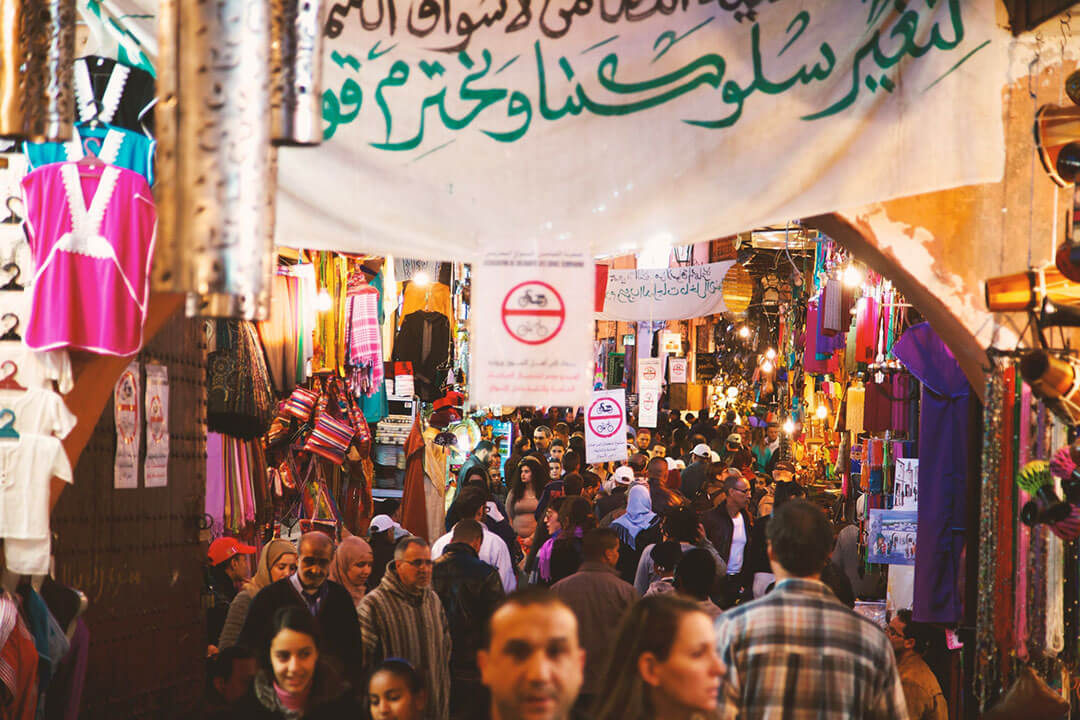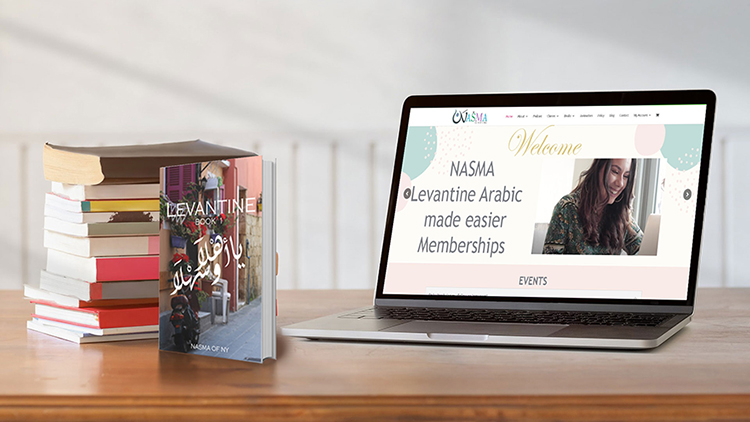
by nynasma | Dec 28, 2020 | BLOG
Language Education in the Time of COVID
This year has thrown us all for a loop. Even if you’re fortunate enough to have not fallen ill to COVID-19, it has disrupted your life: social gatherings are restricted, travel is difficult, jobs are being reduced or eliminated. (Or have become even more hectic. If you work in healthcare, you have my utmost respect.) Even if your job hasn’t changed, your free time has. No longer can you just pop over to your favorite café on a whim: get your mask and your bottle of hand sanitizer, but oh, there’s a lineup; stand six feet behind the next person and endure the Winter chill.… Schools are struggling, as well. Teachers are scrambling to put their curricula online, and students are straining their eyes in front of computers and tablets. We at Nasma have been busy researching and working on the best way to learn Arabic online for kids, so this blog post will delve into some of the insights we have made as we struggled into this new frontier of language education.
A New Language: More Than Just Words
Learning a new language is a terrific challenge. People don’t so much speak their mother tongue as they feel, dream, and live it. Every motion you make, from making your coffee to driving your car, comes with a constantly running subconscious narrative in your native language. And this hazy, half-formed level of thought can be quickly and eloquently turned into spoken and written text in a few hundredths of a second. The brain’s ability to process our native languages is truly marvelous.

Those few hundredths of a second can stretch into long, uncomfortable pauses if you’re trying to speak a new tongue. Vocabulary is an obvious difficulty: you’ll probably manage “good morning/afternoon” without much difficulty. Stammering out the kind of coffee you want might take a second, but that’s not bad … oh! The barista asked an unexpected question. Seconds pass as you pick apart her words and form your reply … “yes, I would like cim—cimman—cinnamon, please.” At this point, the patient cashier will probably just turn the register’s display to show you how much you need to pay.
And vocabulary isn’t even the most challenging part of learning a new language. Idioms tend to throw off even intermediate speakers of a language.
For example, one common expression in Levantine Arabic is “bint issakaafi ḥaafi” (بنت السكافي حافي). Translated literally, this means “the cobbler’s daughter is barefoot.” The English speakers reading this are probably confused: a more suitable translation would be “physician, heal thyself!”
In terms of language acquisition, children leave us adults in the dust. Their growing minds absorb languages extremely well, so it’s a good idea to get your child learning a new language as young as possible.
How You Can Help Your Child Learn Online?

Teachers all over the world, no matter the subject, no matter the age group, whether they’re teaching online or in the classroom, will tell you that parental involvement correlates hugely with academic success. In these uncertain times, your contribution to your child’s education is more important than ever. Teachers, struggling to make their lessons work with online classes, may not be totally efficient in their class management. This is not the fault of the teachers: if a student drifts off in an actual classroom, that’s easy to notice and correct. When trying to teach through a screen, however, inattentiveness is hard to see. They might look like they’re paying attention, but maybe there’s a smartphone playing YouTube videos just out of view.
What, specifically, can you do to ensure that your child is getting the most out of their online studies? Be involved. Ask to see their course materials and homework, even if you don’t understand the material. If the teacher doesn’t mind, pop in and watch part of a lesson. Email the teacher with any comments or concerns you might have (don’t worry about being annoying; an uninvolved parent is much more frustrating than one who asks a lot).
I think that every parent everywhere, after asking their child, “what did you learn in school today?” gets a monotone “nothing” in reply. Instead, ask specific questions about your child’s schooling. Ask what they read today, ask what they need ready for the next class, and ask them to demonstrate a bit of what they know. Don’t neglect the social aspect, either: ask who they spoke with today and how the teacher is doing.
Nasma’s Kid’s Program: The Best Way to Learn Arabic Online for Kids
At Nasma, we pride ourselves on our Arabic for kids program. It has worked well when teaching at our home base in New York City, and we have worked ceaselessly to optimize our curriculum for online delivery. Starting in the new year, we are launching a Winter-themed six-week program. For six Saturdays, your child can join four other children and one of our dedicated teachers and learn Levantine Arabic for all things related to Winter: colors, games, sports, and so much more. Our curriculum is fun, challenging, and safe, and full of engaging stories, songs, and arts and crafts to keep your child busy and entertained. There are several sessions for our six-week course, divided by age (three and four, and five through eight) and Arabic ability (classes are either bilingual or Arabic only). Visit the Nasma Kids’ program page to see what session is right for your child.
If you’re not ready to take that plunge, we have other, free methods of Arabic learning, for kids and others. Our Instagram page posts an Arabic word of the day. There are also Podcast Tuesdays, featuring short chats posted each week from Nasma founder, Carol Haidar. (These are perhaps not the best way to learn Arabic for beginners, being suited for those at an intermediate level.) Finally, you can check out our YouTube channel, which features weekly tips for beginning learners of Levantine Arabic, so it’s a great way to start to learn Arabic online, for kids (and yourself!).

by nynasma | Nov 17, 2020 | BLOG
One Language, Dozens of Dialects
Since you’re reading this, you are curious about the Arabic language. But saying “Arabic language” oversimplifies the matter considerably. There are many varieties of Arabic, some of which are wildly different from others. If you want to read Arabic-language newspapers and websites, then you’ll need to know Modern Standard Arabic (MSA), but that won’t help you much in a conversation. If you want to talk to people, you’d best learn the Levantine dialect or one of the other popular dialects of Arabic. Arabic is not a single language but an umbrella that covers a vast continuum of dialects, each showing a unique history that developed over many centuries. In this blog post, you’ll read a brief overview of Arabic dialects.

Can Arabic Speakers Understand Each Other?
If you’ve read this far, you presumably have a good grasp of the English language. You won’t lack for the company: as many as two billion people speak English (400 million do so natively). Nor will you lack for reading material, as English is the most frequently used language in scientific papers and on the Internet. Arabic’s numbers are more modest in this regard: there are perhaps 400 million speakers, native and second language, of all varieties of Arabic. Most live in the Middle East and the north of Africa, but there is also a significant Arabic diaspora.
What happens if you put an English speaker from Ireland and an English speaker from New Zealand in a room together? Would they be able to converse at once? Or would it take a long time for them to understand one another? As it turns out, they’d figure it out quickly. With a bit of time and patience, those two would soon come to grips with their differences in slang, accent, and minor points of syntax, and could chat happily.
The linguistic term to describe two dialects or languages that are similar enough that a speaker of one can understand the other is mutually intelligible. Despite the huge number of speakers, all varieties of English are mutually intelligible. No two are so distinct that a pair of speakers from far-flung cultures would be unable to work through their differences and communicate efficiently.
With Arabic, the situation is more complicated. Distant varieties of Arabic can be mutually unintelligible, and some linguists consider such wildly different varieties to be entirely separate languages. For example, an Arabic speaker from Saudi Arabia would have great difficulty understanding an Arabic speaker from Morocco.
One solution to the problem of unintelligibility comes in the form of Modern Standard Arabic (MSA). MSA developed alongside the use of the printing press in the Arabic world, and it is a standardized form of Arabic. MSA is the language used by newscasters, academics, schoolteachers, lawyers, and legislators. Most Arabic speakers use MSA only for reading and writing and prefer their mother dialect for speech. Nobody speaks MSA as a first language, but since all Arabic speakers know MSA, it provides a common ground for speakers whose dialects of Arabic are mutually unintelligible.
Incidentally, mutual intelligibility is not a yes or no proposition. Some dialects are highly mutually intelligible, others only somewhat so. Roughly speaking, the farther apart the geographic homes of two dialects are, the less intelligible they will be.

The Many Arabic Dialects
As mentioned above, Arabic varies considerably from region to region. There are approximately 30 total varieties. Some are quite like one another, and some are mutually unintelligible. A blog post is insufficient to discuss all these varieties and the differences between them, so what follows is a necessarily incomplete list of some of the most-spoken varieties.
This is the family of Arabic dialects spoken in Morocco, Algeria, Tunisia, and Libya. About 70 million people speak the language. Maghrebi Arabic shows a lot of influence from the Berber language and has liberally borrowed loanwords from French, Spanish, and Italian. Thanks to this unique combination of influences, Maghrebi Arabic tends to be incomprehensible to Arabic speakers from the Middle East, with Moroccan Arabic being particularly opaque.
Egyptian Arabic is the native language of more than 60 million people, and thanks to the popularity of Egyptian media and the broad influence Egypt wields, most of the Arabic-speaking world understands Egyptian Arabic. Keep in mind, however, that the people of Egypt speak a variety of dialects; when people say “Egyptian Arabic,” they usually mean the Arabic commonly spoke in Cairo.
Like so many other varieties of Arabic, the Levantine dialect is not a single form of Arabic, but a continuum of dialects. There are several mutually intelligible dialects: Palestinian, Jordanian, Lebanese, and Syrian Arabic are the primary varieties of Levantine Arabic, totaling over 30 million native speakers.
Part of the popularity of Levantine Arabic comes from the creativity of its people. As in Egypt, the people of the Levant produce a huge variety of music and shows, and thanks to the mutual intelligibility of the dialects, Arabic-speaking citizens of one country can easily enjoy the media of the others. Additionally, producers of foreign media often expand their viewership into the Levant by producing Levantine translations of their works. Turkish soap operas are so popular in the Levant that several shows are regularly dubbed into Levantine Arabic.
There is also a significant diaspora of Levantine Arabic speakers. It’s obvious why: the conflict between Israel and Palestine, the civil war in Syria, protests and upheavals in Lebanon and Jordan … the Levant has suffered through political and economic instability for years. Many people have taken the difficult decision to leave their homelands to try to find safer places to live, and those people brought their language with them.
There are many more varieties of Arabic than the few discussed here, and we hope to discuss more in future posts. If you are curious about learning Levantine Arabic, please browse through the rest of our website. Check out our podcast or follow us on Instagram and you can start to learn Arabic for free, one word at a time.

by nynasma | Oct 14, 2020 | BLOG
The Arabic Language: A Brief Overview
If you’re reading this, you’re interested in learning Arabic online. Whether want to learn the Arabic alphabet or just brush up on your conversational skills already, it doesn’t hurt to know a little about where Arabic comes from and how it’s spoken today.
Arabic is the fifth-most-spoken language in the world, but that simple statement belies considerable complexity. Arabic has been spoken since the first century. However, time and the movement of people have split the language into dozens of dialects. Many of these dialects are quite different: an Arabic speaker from Morocco will struggle to make himself understood by an Arabic speaker from Sudan. With the introduction of the Arabic printing press in the 1800s, publishers started attempting to standardize Arabic. This was the beginning of Modern Standard Arabic (MSA).
MSA is a standardized dialect taught across the Arab world. It is an official language of more than twenty countries and an official language of the United Nations. Few people, if any, speak MSA as their mother tongue, but MSA is taught in schools and is the primary Arabic dialect used in books and other media. The Moroccan and Sudanese Arabic speakers will likely be able to communicate in MSA. Still, MSA is not often used in conversation, and most Arabic speakers use MSA only passively, such as when reading websites and watching the news.
Arabic is the official tongue of many nations, but its 400 million speakers live all around the globe. Many people living far from the Middle East take the obvious course of action and learn Arabic online.

How Many Kinds of Arabic Are There?
The answer depends on whom you ask: estimates can reach up into the dozens. Linguists lump dialects of Arabic into several groups: Egyptian, Maghrebi, Sudanese, Mesopotamian, Peninsular, and Levantine Arabic (our speciality). Some of these groups are further split into dialects, which too numerous to list in a short blog post; the total number of dialects is around three dozen. (You can see why the standardized MSA is a helpful invention!) Some of the varieties of Arabic are spoken by tens of millions, others have only a few thousand speakers.
Classical Arabic
In addition to the many varieties of Arabic spoken today, one might come across Classical Arabic. This is the Arabic that arose in the seventh century and persisted through the middle ages. Many speakers of Arabic make no distinction between Classical Arabic and MSA, considering them to be two registers of the same language. Classical Arabic is also the liturgical language of Islam.
Why Arabic?
For many, learning Arabic online is a personal method of getting in touch with one’s roots. Children and grandchildren of immigrants may not be able to speak well with their families in their homelands, and they do not always feel connected with their culture. A family in Oslo or Kyoto or Moose Jaw might struggle to find an Arabic tutor, much less a masterclass or after-school program. Being able to learn online gives those people a sense of identity and family they might not otherwise have. This was the case for our founder, Carol Haidar, who moved to New York in 2013. Teaching the language, from those just starting to learn up to conversational mastery, is her method of staying in contact with Arabic culture.
Aside from personal reasons, there are a wide variety of personal and professional reasons to learn Arabic. Those inclined to travel, of course, benefit from knowing the languages of the places they visit. Entrepreneurs who know the language can more easily make connections in burgeoning Middle East markets. And the history and culture of the Middle East fascinate scholars and laypeople alike. And nothing quite stimulates the intellect of a child as learning another language.
To someone who knows only the Latin alphabet, the Arabic alphabet looks hopelessly complicated. A few basic facts provide a good start to greater understanding:
- Arabic is written and read from right to left. Numbers read left to right.
- There are twenty-eight letters in the Arabic alphabet. All are consonants.
- Vowels are often omitted entirely. Three consonants can also represent vowels, and diacritic marks also indicate certain vowels.
- There are no uppercase or lowercase letters, but the shape of letters can change depending on whether the letter is a first, last, or middle letter of a word, or if it stands alone.
Arabic is a phonemic language. That is, the letters correspond closely with the sounds they represent. Spare a moment of thought for those unfortunate people who are learning English, puzzling over cough, though, bough, and through. Arabic is much simpler once you know what sounds match with what letters.
Most adult study materials for Arabic, including our own, include both Arabic text and Latin phonetics. This makes it easy to learn to read, write, and speak all at the same time.
Options for Learning Arabic Online

Interested in our online classes? We offer several different options to help you learn.
1. Private Lessons: one of our dedicated private instructors will assist you in learning Modern Standard Arabic or the Levantine dialect.
2. Kids’ Program: Starting at age three, we offer six-week programs designed to give young children an early start on speaking Levantine Arabic.
3. Levantine Masterclass: For people fourteen and older, our online masterclass features a curriculum and course materials written by Nasma’s founder, Carol Haidar. Courses are suitable for beginners, so you’ll learn the Arabic alphabet and work your way up from there. Learn at your own pace with weekly instructional videos, homework, and Zoom meetings.
Right now, we are offering a fourteen-day free trial of our masterclass, so you can start to learn Levantine Arabic for free. See if it’s right for you, and don’t hesitate to get in touch if you have a question.









